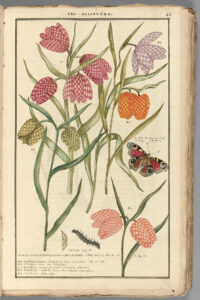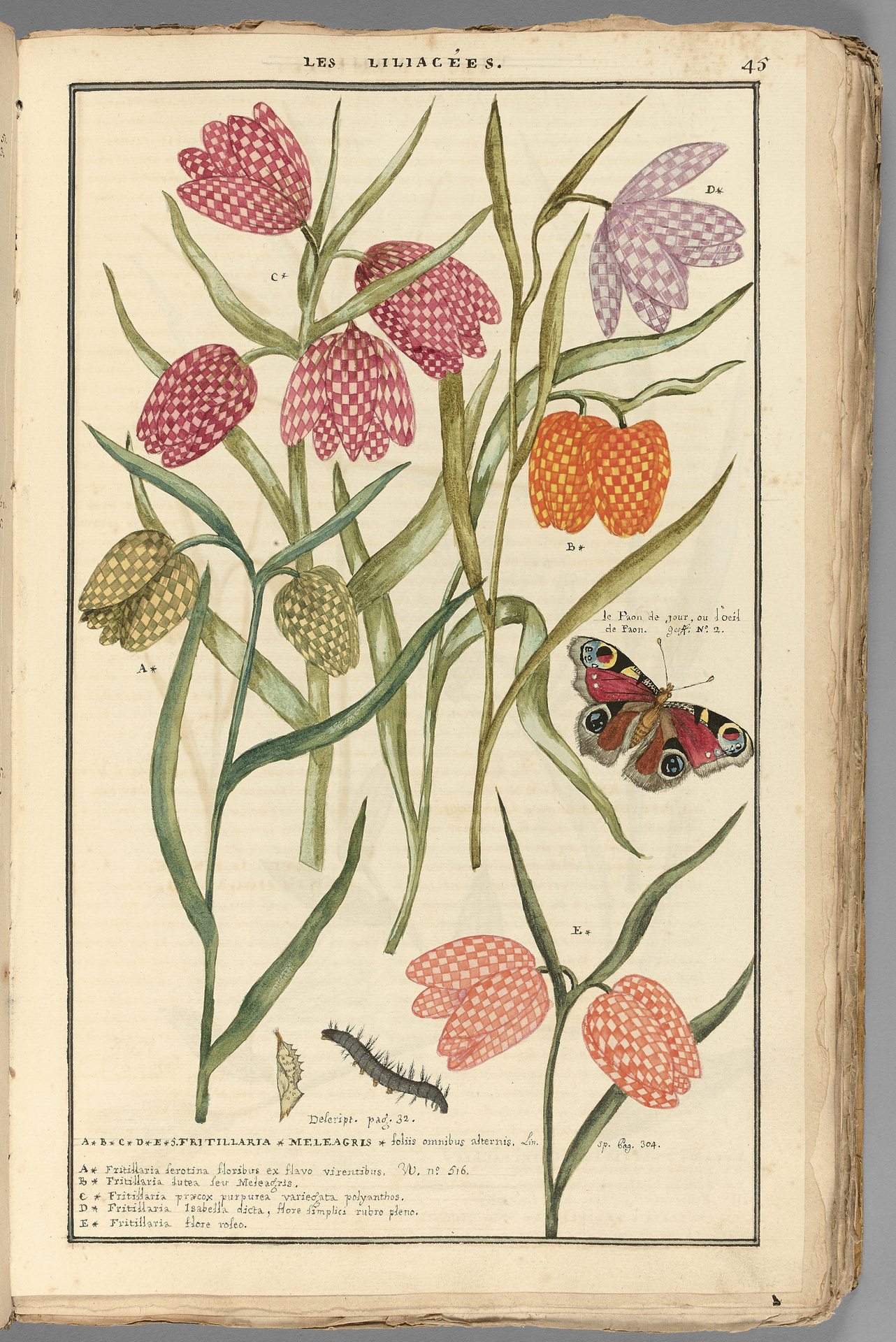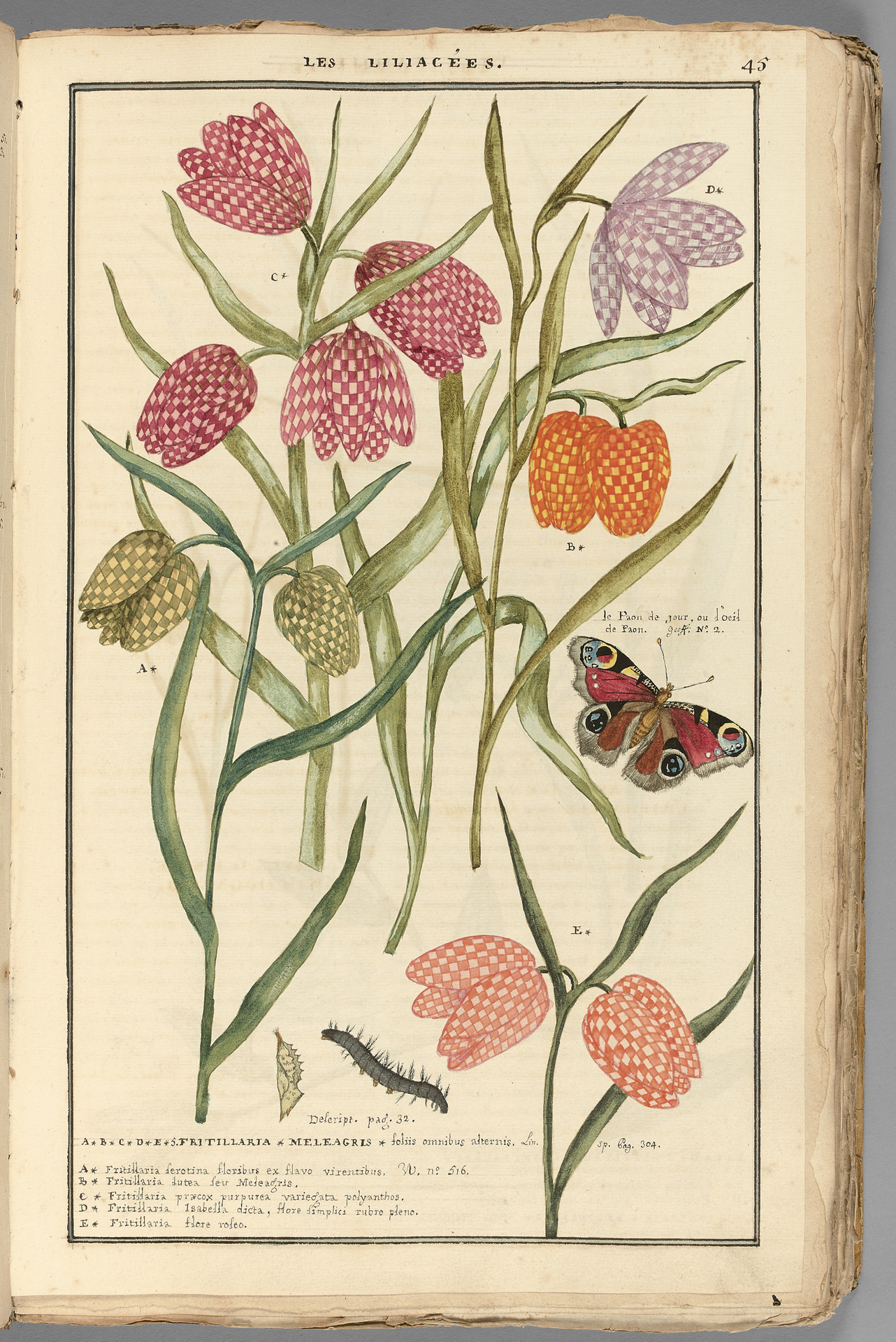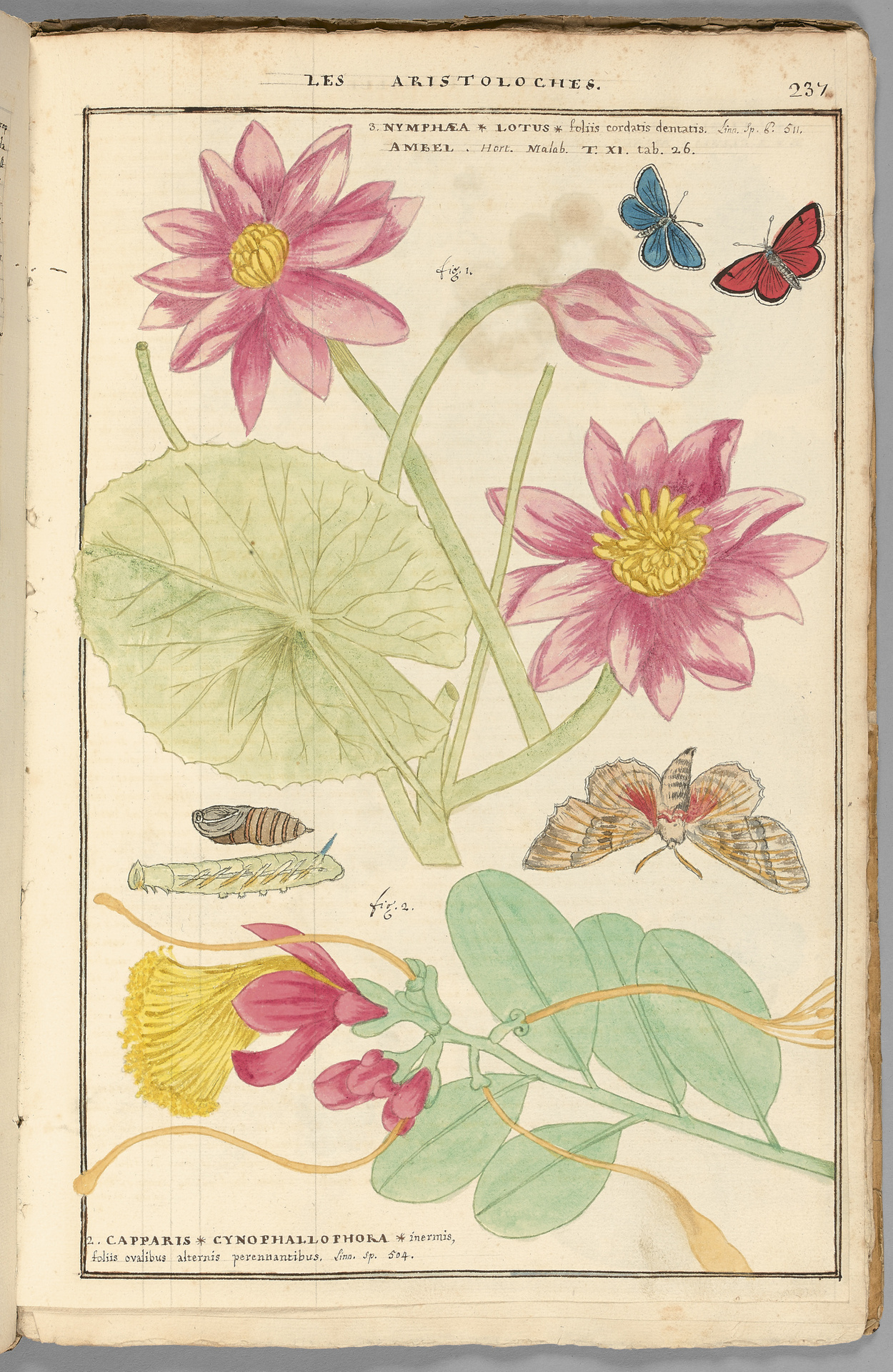Dijon, 1768.
1 volume large folio [423 x 270 mm] of (1) l. table, (1) l. frontispiece, 262 pp. including 124 full-page plates.
Yellow cardboards, original water colored label in the middle of the first plate bearing in calligraphic letters: VIII – Famille, Les Liliacées. IX Famille, Les Gingembres et au centre du second plat : X Famille, Les Orchis. XI Famille, Les Aristoloches ; spine in decorated green paper. Contemporary Dominican binding.
Original botanical calligraphed manuscript of 262 pages, of a distinct rarity, drawn and water colored in 1768 by brother Jean Vernisy, religious Dominican in Dijon, decorated with 124 out of pagination plates drawn and water colored on imperial paper describing 338 flowers, plants and shrubs in the most gracious colors following the Michel Adanson’s method.
The plates are accompanied by insects or mammals. The manuscript opens with an “alphabetical table of pants contained in this collection” followed by a superb drawn title, water colored and armes bearing the date of 1768.
The volume opens on the liliaceae, followed by rushes, lilies, scilles, onions, asparagus, stems, daffodils, crocuses, irises, jacynthes, gingers, orchis, aristoloches, etc.
Michel Adanson (1727-1806) was one of the most important naturalists of the 18th century. He was above all a botanist, and it’s because of this field, especially, that he got his reputation. The real contribution of his work Families of plants (1763-1764) to the botanical science was appreciated with an immense delay. The natural classification method that he developed was hardly understood and was only estimated at its right value in 1963, during the great symposium organized on the occasion of the bicentenary of the publication of the work. It was around the 1960s that the digital (or “phonetic”) taxonomy emerged, based on the idea that Adanson had used on the combinatorial calculations to classify the plants in his work Families of plants.
Following Jean Dufrenoy, “the origin of this movement can be attributed to P. H. Sneath who, has “rediscovered” the natural classification proposed by Adanson […], understood that this classification lent itself particularly well to the application of electronic calculators in taxonomy (J. Gen. Microbiol. 17, 201-206, 1957) ”. And it’s precisely that bicentennial year of the publication of the first volume of Families of plants that the great pioneering treatise on phonetics, Principles of numerical taxonomy, of Peter H. A. Sneath and Robert R. Sokal. An expanded edition will be given in 1973.
It now appears to us that adanson has a decisive place in the history of natural science, since by rejecting on the one hand the “spirit of the system” and by defending on the other hand a universalist and totalizing vision of the living world, he realizes a perfect synthesis of “linneaus” and of “buffonism”.
Adanson was the first to give effectively a natural method of botanical classification, and not only to trace the idea as did his mater Bernard de Jussieu (1699-1777) or his great rival Carl Linnaeus (1707-1778). The first insisted on the necessity to establish an arrangement according to all plant affinities, without really daring to move from theory to practice. The second published starting from 1735 the Systema naturae, his famous “sexual system”, which did not pretend to expose the natural classification of plants, although Linnaeus considered that “the natural order’, if one day it could be traced (perspective doubtful), simply went through the improvement of its system, as the species were discovered.
Adanson very early acquired the central concept of this natural method. The early stages of this “holistic” idea appear in a letter to Jussieu, on 1 August 750:
“I’ve found, wrote Adanson, a way of describing very different than the one I used, at the time of my first mailing, and it’s the only one I find to be good and useful, because not only does she understand absolutely every part of different natural bodies, but because she describes these parts in all their own qualities.”
The conceptual revelation that the young Adanson had in Senegal was founded on the conviction that the “partial” creates the “fake”. In that sense, this journey was a definitive realization of the aporia of “systems”, which all rest on the mistaken idea that a “principle” has a power of subsumption. No the whole cannot be included in that part, and this is what Adanson discovered in Senegal. He also testifies about this revelation:
“[…] Botany seems to change entirely from the front, as soon as we quit our tempered country to enter the torrid Zone: it’s always the Plants; but they are so singular in their form, they have attributes so new, that they elude most of our Systems, of which the limits hardly extend beyond the Plants of our climates.”
His method, based on the combinatorial appreciation of a set of partial systems embracing the totality of “parts” of an organism was first tried on molluscs. Then it extended to the plants (Families of plants).” (Xavier Carteret
Precious and superb original botanical manuscript, drawn and water colored in 1768 in the Dominican Dijon Abbey enriched with 124 admirable original plates out of pagination on imperial paper, composed following Michel Adanson’s method.




